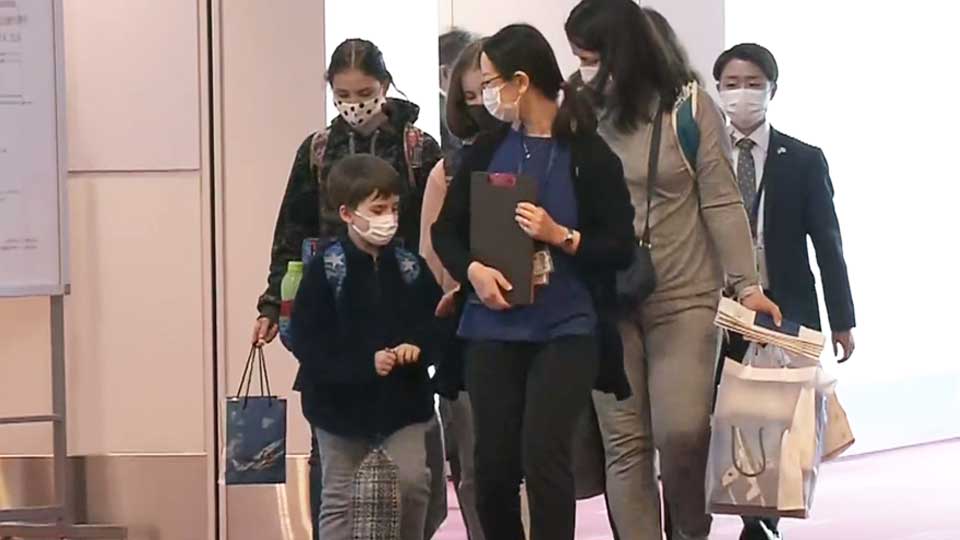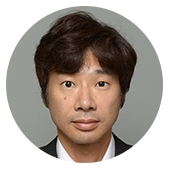The evacuees — five male and 15 female, aged from 6 to 66 — disembarked the aircraft after testing negative for the coronavirus.
Their arrival was arranged during Japanese Foreign Minister Hayashi Yoshimasa's visit to Poland this month. He was sent as a special envoy of Prime Minister Kishida Fumio.
Hayashi was in Poland to see how the country that has received the largest number of Ukrainian evacuees to date is handling the situation.
He met Polish leaders as well as Japanese officials who were sent ahead as a support team. He also visited evacuee facilities near the Ukrainian border to learn what kind of help people need.
Hayashi told reporters that he would take back to Tokyo some Ukrainians who want to come to Japan but who have been unable to secure passage.
"Poland hosts the largest number of displaced people among neighboring countries," said Hayashi. "Japan will also accept as many as possible from a humanitarian point of view."

Refugees relieved but still worried
"People welcomed us warmly, greeting us like family when we arrived here in Japan," said one of the evacuees. "Thank you very much for accepting us. War is really cruel."
Some of the 20 new arrivals have relatives or acquaintances in Japan, but others have no connections. People in the latter category are staying at government-arranged hotels. A foundation with expertise in refugee assistance provides them with meals and support.

The organization plans to match them with local governments and companies willing to accept them.
Government officials are considering paying for their living and medical expenses, as well as Japanese language lessons, vocational training and education for their children if necessary.
Officials estimate that the support could last about six months.
Additional 100 million dollars in aid
Prime Minister Kishida announced last month that Japan would contribute another 100 million dollars in emergency humanitarian aid to Ukraine and neighboring countries.
And his government on April 5 detailed how this aid would be allocated through international organizations. It plans to secure the safe passage of evacuees out of Ukraine and to provide food, daily necessities, medicine and other relief supplies.
On top of that, government officials say they will help Ukraine clear debris, landmines and explosives. They also plan to support agriculture by distributing seeds to farmers.

"We will continue to work with the Group of Seven countries and other members of the international community to provide support for the people of Ukraine," Japanese Chief Cabinet Secretary Matsuno Hirokazu told a news conference.
Analysis: Masuda Tsuyoshi, NHK World Senior Political Commentator
Tokyo has received substantial international criticism over the years for the extremely low numbers of refugees it accepts. In 2021, Japan admitted only 1% of a total of applicants.
That's one reason the current highly public move to accept and support evacuees from Ukraine is attracting so much attention.
One of the top priorities of the Kishida administration is staying in step with the United States and Europe on the international stage. Accordingly, Japan has decided to impose tough economic sanctions on Russia in line with other G7 nations.
But measures to provide military support to Ukraine are limited, partly due to constitutional restrictions. So Japan is trying to focus on what it can do, such as supporting evacuees.
Before these 20 Ukrainians, around 400 fled to Japan. The government says it wants to share the burden with other countries.
Taking evacuees home on a government jet is apparently a signal to the international community that Japan is swiftly addressing humanitarian issues.
There were only 20 evacuees on the flight, but I think their arrival has achieved some results.
The move coincides with the six-month anniversary of the launch of the Kishida administration, and recent developments in Ukraine are certain to have impacted the prime minister's foreign policy.
Kishida says Russia's invasion cannot be overlooked from the viewpoint of Japan's own national security.
Behind this remark is Kishida's concern that Japan may not receive sufficient support from the US and Europe in the event of a crisis in East Asia — that includes Taiwan and the Korean Peninsula.
Kishida has imposed tough sanctions on Russia, even though that means decades-long territorial negotiations with Moscow almost certainly have to be scrapped.
He also announced additional sanctions on April 9. The aim of the measures, which are in line with the G7, is to phase out Russian coal imports, and reduce Japan's reliance on Russian energy.
As a consequence, the prime minister is turning his back on his past policies as foreign minister in Abe Shinzo's administration. Back then Abe tried to advance talks over the territorial disputes by taking a conciliatory approach to Russian President Vladimir Putin.
Kishida is shifting away from nearly a decade of diplomacy led by Abe — a foreign policy that was a major turning point in Japan's post-war history.
In doing so, he appears set on pursuing diplomacy based on realism.

